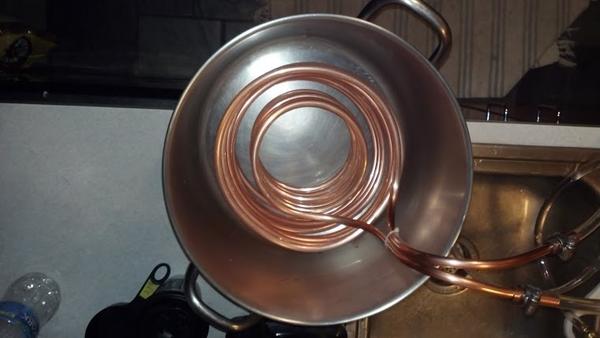I'm in Texas and my ground water stays so warm in the summer, i have been weary of getting one. Chilled partial extract batches very fast, no issues. Ive now chilled two full volume batches, down to 75f. 20 minutes. Using a giant plastic bin and A LOT of ice / frozen water bottles. I want to upgrade, but whats the point if my ground water is the same temp as the nighttime outside?
I'm fortunate(?) to live in a region where the water stays cold pretty much all year round, but I think you could still chill your wort quickly with the right equipment, even with warm groundwater/city water.
First off, it looks like you're already collecting water bottles in your freezer. That's good, that's a cheap way to build up a supply of ice. A side benefit is that it's better for your freezer, since the more full it is, the less it has to work. And if you have a power failure, the extra thermal mass of having all that ice in your freezer will keep your food colder much longer.
Now, back to wort chilling, here's how you could get your wort down to lager temperatures in minutes. You'd need a coiled copper immersion chiller and a plate chiller. Take a camping cooler and put your IC in it. Pack inside and around the coils with your frozen water bottles, as much as possible. Fill it up with (admittedly warm) water. Give it a few swirls, the water should be ice cold very quickly. Then connect your hose to the "in" port of the immersion chiller, and connect the "out" to the COLD WATER IN port of a plate chiller. Open the faucet, run your wort through the plate chiller and into a fermenter, it should be nice and cold.
For extra efficiency, you could use your IC as you normally would, even with your warm faucet water temperatures, to knock the first 20-40 degrees off of that boiling wort pretty quickly, before switching things around and using the ice-bath pre-chiller to finish the job. This would allow you to make the most of your ice.
For bonus points, collect the hot output water from the plate chiller and use it to clean your equipment.





